TL;DR
A buyer persona is a research-based profile of your ideal customer. It includes their demographics, goals, pain points, and buying behavior. Here’s a quick process on how to create a buyer persona:
1. Research your audience – Use analytics, surveys, and interviews to gather demographic and behavioral data.
2. Identify pain points & goals – Understand the challenges your audience faces and what they want to achieve.
3. Build the persona profile – Give it a name, description, and visual representation.
4. Validate & update – Review with customer feedback and refine over time.
Pro Tip: Create separate personas for different audience segments and use them to guide your marketing, product development, and sales messaging.
Creating a buyer persona is important for any business that wants to understand its target market and tailor its marketing strategies accordingly. The best marketers know that clearly defining your ideal customer is the key to high conversions.
For example, here at OptinMonster, we understand that our ideal customers include entrepreneurs, small business owners and marketers, and marketing professionals at medium and large businesses. Our target audience wants to improve their website conversions with an affordable, easy-to-use tool. This knowledge helps us create buyer personas that inform all our marketing and sales efforts.
In this blog, I’ll share a step-by-step guide on how to create a buyer persona, along with free buyer persona templates and examples.
- What is a Buyer Persona?
- Why Are Buyer Personas Important?
- Types of Buyer Personas
- How to Create a Buyer Persona
- Buyer Persona Templates and Generators
- 188 Buyer Persona Questions
- Buyer Persona Examples
What Is a Buyer Persona?
A buyer persona is a detailed, fictional profile representing your ideal customer or a segment of your target audience.
Also known as a customer persona, audience persona, or marketing persona, this tool is crafted from research and data about real customers and helps you better understand and relate to your potential customers’ needs, behaviors, and preferences.
It includes information but is not limited to:
- Who your customer is
- What they do for a living
- Their basic demographic info
- What problem they need to solve
- Their buying habits
Here’s an example of what a typical buyer persona might look like:
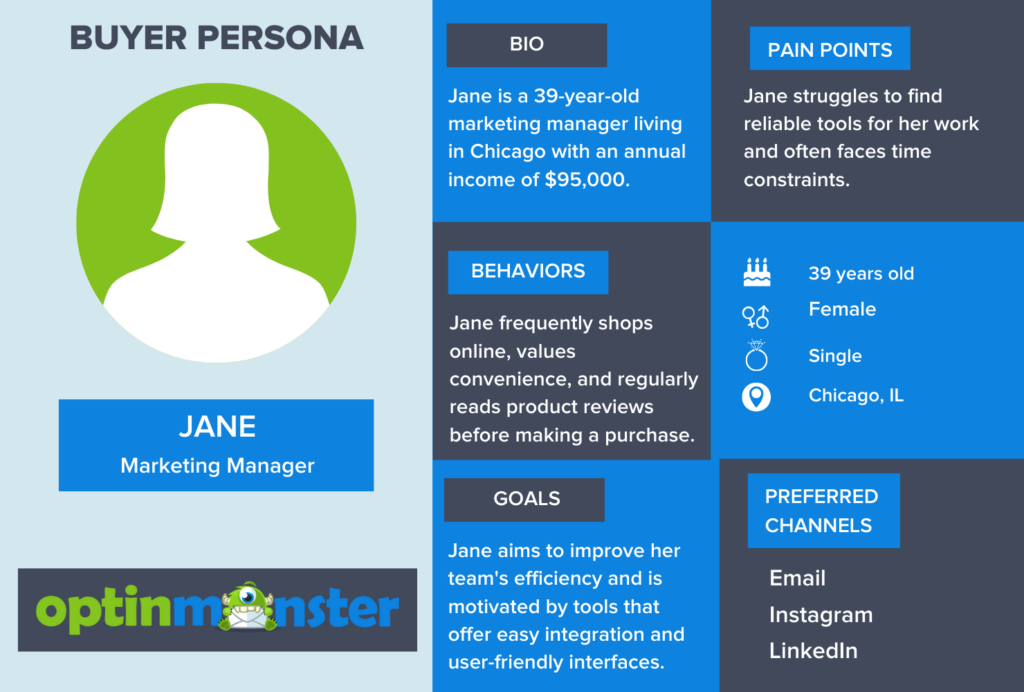
You may have more than one buyer persona. In fact, you probably should. Most products and services are a good fit for several different “types” of people, so you’ll need to create a buyer persona for each.
That way, when you write any blog post, email, or sales pitch (or even create a new product), you’ll know precisely which buyer persona(s) you are targeting. And in turn, you’ll enjoy much higher conversion rates.
Did you know . . .
. . . OptinMonster works on any website and helps businesses of all sizes grow their email lists and increase sales?
Read about how OptinMonster works for different types of businesses and then try it for yourself!
Why Are Buyer Personas Important?
Buyer personas are important for businesses as they enable personalized marketing, improve customer experiences, foster team alignment, and support data-driven decision-making.
1. Personalized marketing: A buyer persona allows a business to tailor their marketing efforts to its target audience’s specific needs and wants.
2. Improve customer experience: By better understanding their customer pain points and goals, a business can create products and services that better meet their needs and provide a better overall customer experience.
3. Align teams: A buyer persona helps teams across the organization have a common understanding of the target audience, which leads to more consistent marketing messaging and branding.
4. Make data-driven decisions: By using data and research to validate the buyer persona, businesses can make data-driven decisions about their marketing and product development strategies.
Okay, now that you know what a buyer persona is and why it’s so important for your business, let’s dive into how to create your own!
Types of Buyer Personas
Here are some common types of buyer personas:
1. The Bargain Hunter: This persona is primarily price-motivated and always seeks the best deal. They are likely to be influenced by discounts, coupons, and sales.
2. The Quality Seeker: Quality and durability of products are the main concerns for this persona. They are willing to pay a higher price for products that offer superior quality or unique features.
3. The Brand Loyalist: This persona strongly prefers certain brands and is less price-sensitive regarding their favorite brands. They often make repeat purchases and can become brand advocates.
4. The Researcher: This buyer persona spends much time researching products before purchasing. They are detail-oriented and seek out comprehensive information, reviews, and comparisons.
5. The Impulsive Buyer: Often driven by emotion, this persona makes quick purchase decisions without much prior research. They are more likely to be influenced by eye-catching marketing and time-sensitive offers.
6. The Ethical Consumer: This persona prioritizes products and brands that are environmentally friendly, socially responsible, or aligned with their values.
7. The Tech Enthusiast: Always on the lookout for the latest technological advancements, this persona values innovation and cutting-edge product features.
8. The Convenience Seeker: For this persona, ease of purchase, delivery, and use is key. They value straightforward, hassle-free shopping experiences and might prefer online shopping or products that save time.
How To Create a Buyer Persona in 4 Steps
- Step 1: Conduct Market Research
- Step 2: Identify Pain Points and Goals
- Step 3: Create a Profile
- Step 4: Validate, Refine, and Update Your Persona
Step 1: Conduct Market Research
Identify the Target Audience
The first step in creating a buyer persona is identifying your target audience. This may involve analyzing your current customer base, looking at demographic data, or conducting surveys and focus groups. The goal is to understand who your customers are and what they need from your product or service.
Gather Demographic Information
Once you have identified your target audience, gathering demographic information is next. This may include age, gender, income, education level, location, and interests. This information will help you better understand your customers and create a more accurate representation of your ideal customer.
Analyze Market Data
In addition to demographic data, iit’s important to analyze market data such as customer behavior and purchasing habits. This information will give you insights into how your customers make buying decisions and what factors influence them.
You can gather your audience’s data from your customer database, Google Analytics, and social media analytics.
Step 2: Identify Pain Points and Goals
Determine the Challenges Faced by Your Target Audience
It’s important to understand the challenges faced by your target audience, as this will help you identify their pain points. This may involve researching common problems in your industry or conducting surveys and focus groups to gather customer feedback.
Understand Their Goals and Aspirations
In addition to identifying pain points, it’s important to understand your customers’ goals and aspirations. This will give you insight into what motivates them and what they hope to achieve by using your product or service.
The sales team and customer support department are key to answering these questions. Still, another great way is to engage in some social listening and social media sentiment analysis.
Putting up search streams to track mentions of your brand, products, and competitors gives you real-time insight into what people are talking about you online. This way, you know what they love about your products or what needs to be improved.
Step 3: Create a Profile
Give Your Buyer Persona a Name
Once you have gathered all your data, the next step is creating a profile for your buyer persona.
Start by giving them a name. Giving your persona a name will help to humanize them and make it easier to refer to them when making decisions about your business.
Develop a Detailed Description of Your Persona
The next step is to develop a detailed description of your persona, including demographic information, pain points, goals, and motivations. You can also include a photo or illustration to help you visualize the persona.
The more detailed the profile, the better you’ll be able to understand your target audience and tailor your marketing efforts to their needs.
Step 4: Validate, Refine, and Update Your Persona
Conduct Surveys and Interviews With Your Target Audience
To make sure that your buyer persona is accurate, it’s important to validate it through surveys and interviews with your target audience. This will give you additional insights and help refine your persona as needed.
Analyze Customer Feedback and Data
You can also analyze customer feedback and data to see how well your persona matches your customers’ actual behavior. You may need to revise and refine your persona based on this information.
Your buyer persona is not set in stone and should be updated as you gather more information. Continuously review and refine your persona as you collect new data and insights.
Buyer Persona Templates and Generator
There are tons of free buyer persona templates and buyer persona generators available on the internet, but here is a curated list of all the best ones.
1. Xtensio’s User Persona Creator
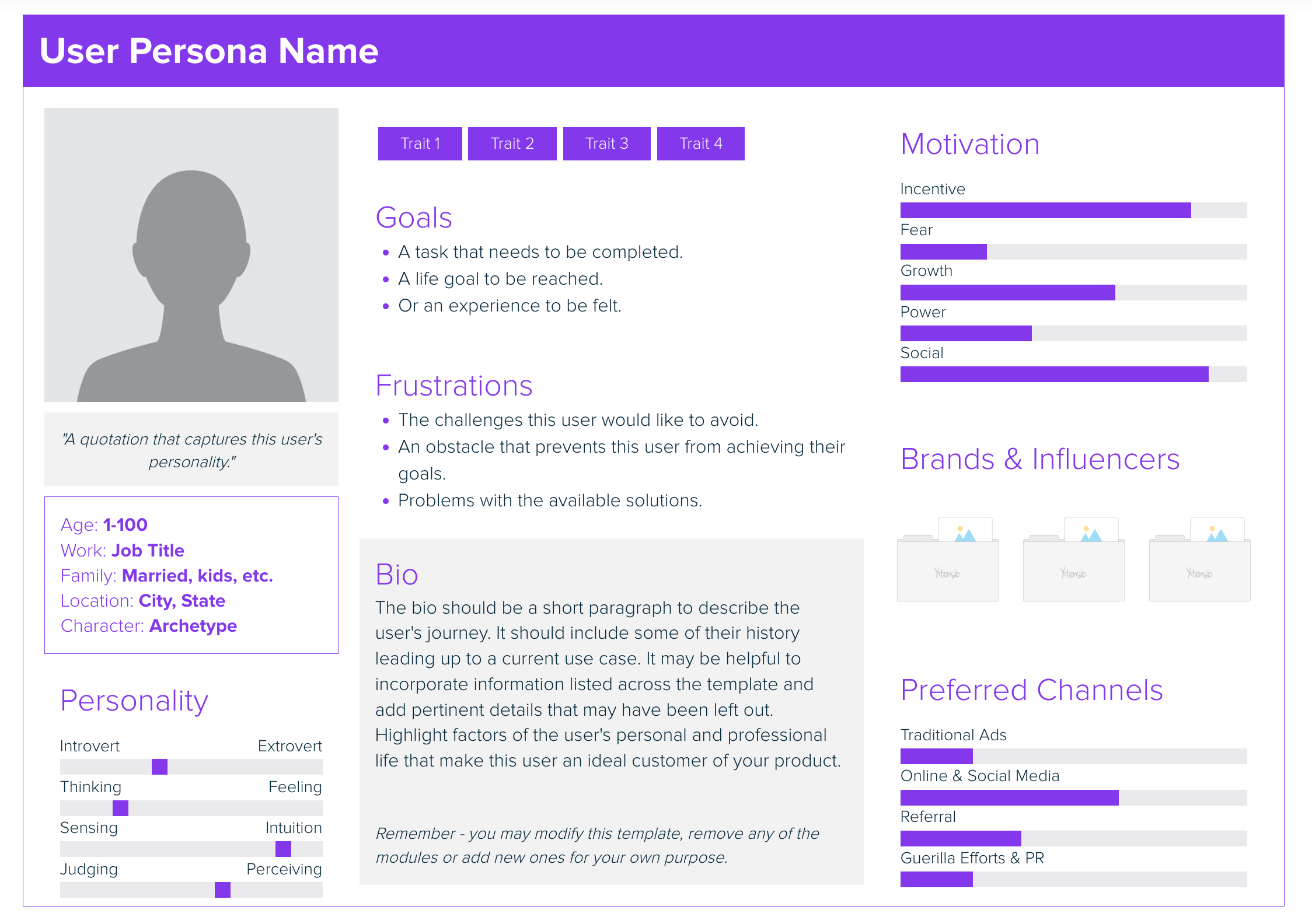
Xtensio’s User Persona Creator is a neat app that offers a buyer persona template that allows you to enter your persona’s demographics, goals, frustrations, bio, motivations, preferred channels, and brands. You can even add modules to the avatar as you see fit. Register for a free account to get started with the tool.
2. Digital Marketer’s Customer Avatar Worksheet
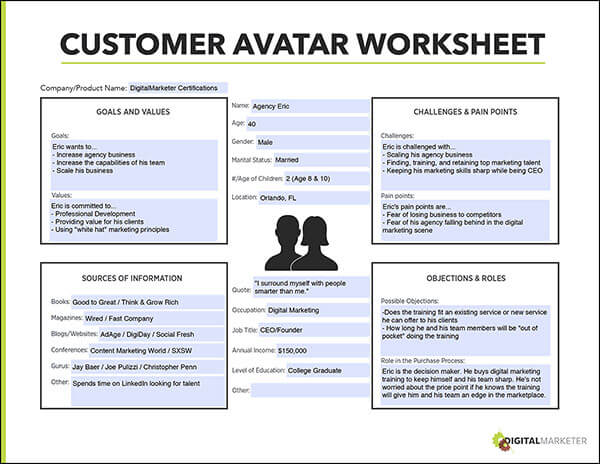
Digital Marketer’s Customer Avatar Worksheet is the buyer persona template we use here at OptinMonster. It includes all the important areas in a simple PDF format that you can fill on your computer.
3. Demand Metric’s Buyer Persona Template
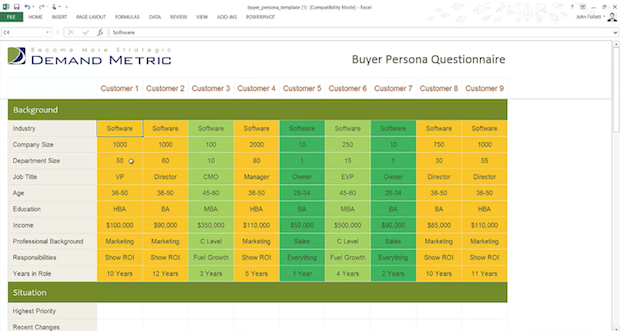
Demand Metric’s Buyer Persona Template is an Excel spreadsheet that includes multiple tabs for multiple consumer personas. It’s a great way to view all of your target customers at a glance, with all relevant information. They’ve even included a video with helpful instructions for filling it out.
4. Marketo’s Marketing Persona Cheat Sheet
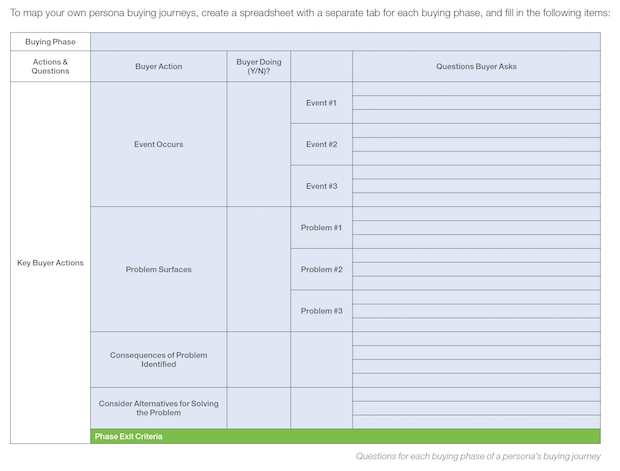
Marketo’s Marketing Persona Cheat Sheet is unique because it includes a fill-in-the-blank map for creating your consumer persona. It also contains instructions for how to create a customer journey, along with a buyer journey template.
5. Filestage’s Buyer Persona Template
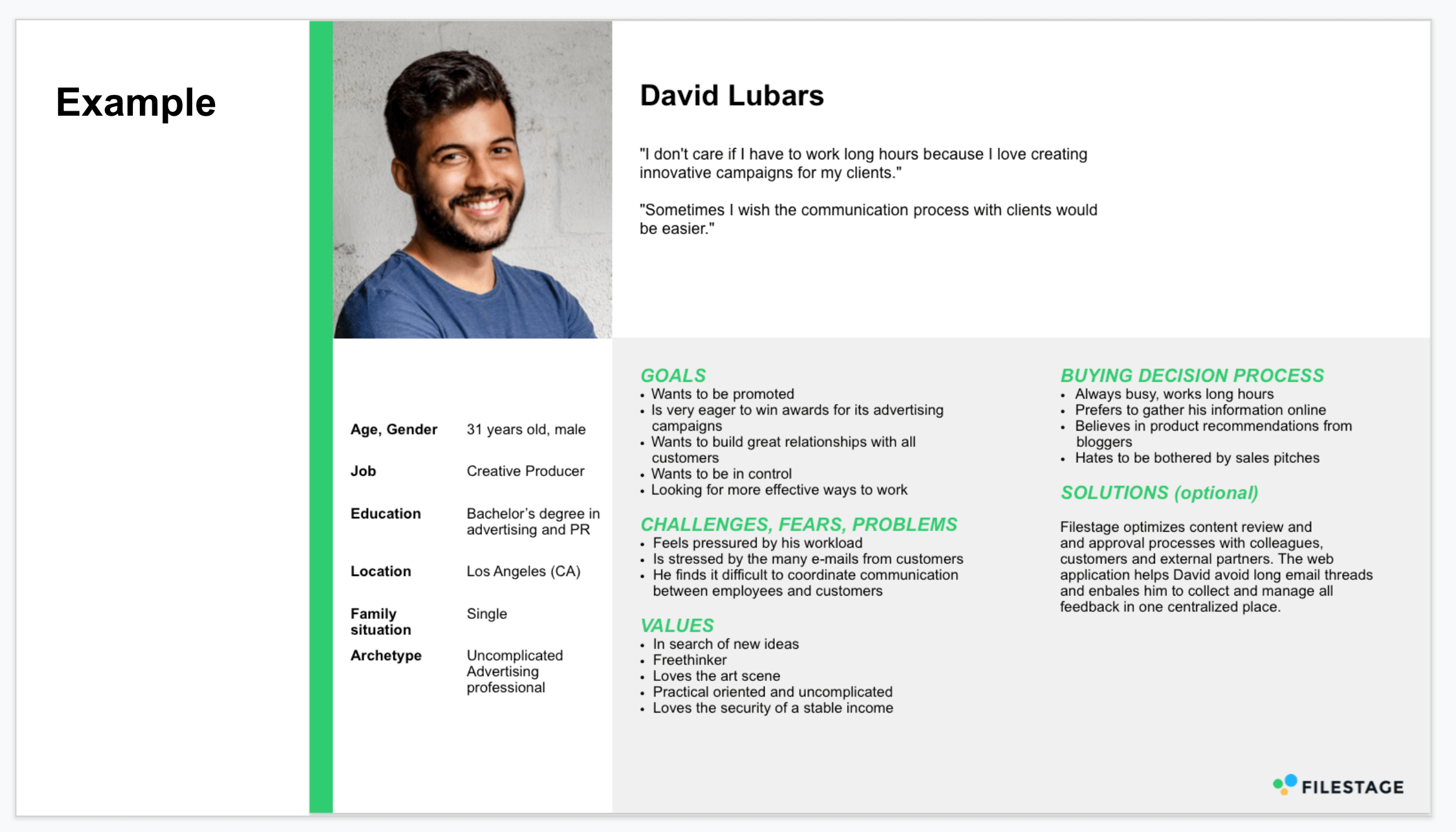
Filestage’s Buyer Persona Template is simple and elegant. Some unique features of this template are sections for a tag cloud, archetype, and product adoption group. It also comes with a PowerPoint version as well as a PDF version.
6. “MakeMyPersona” Buyer Persona Generator
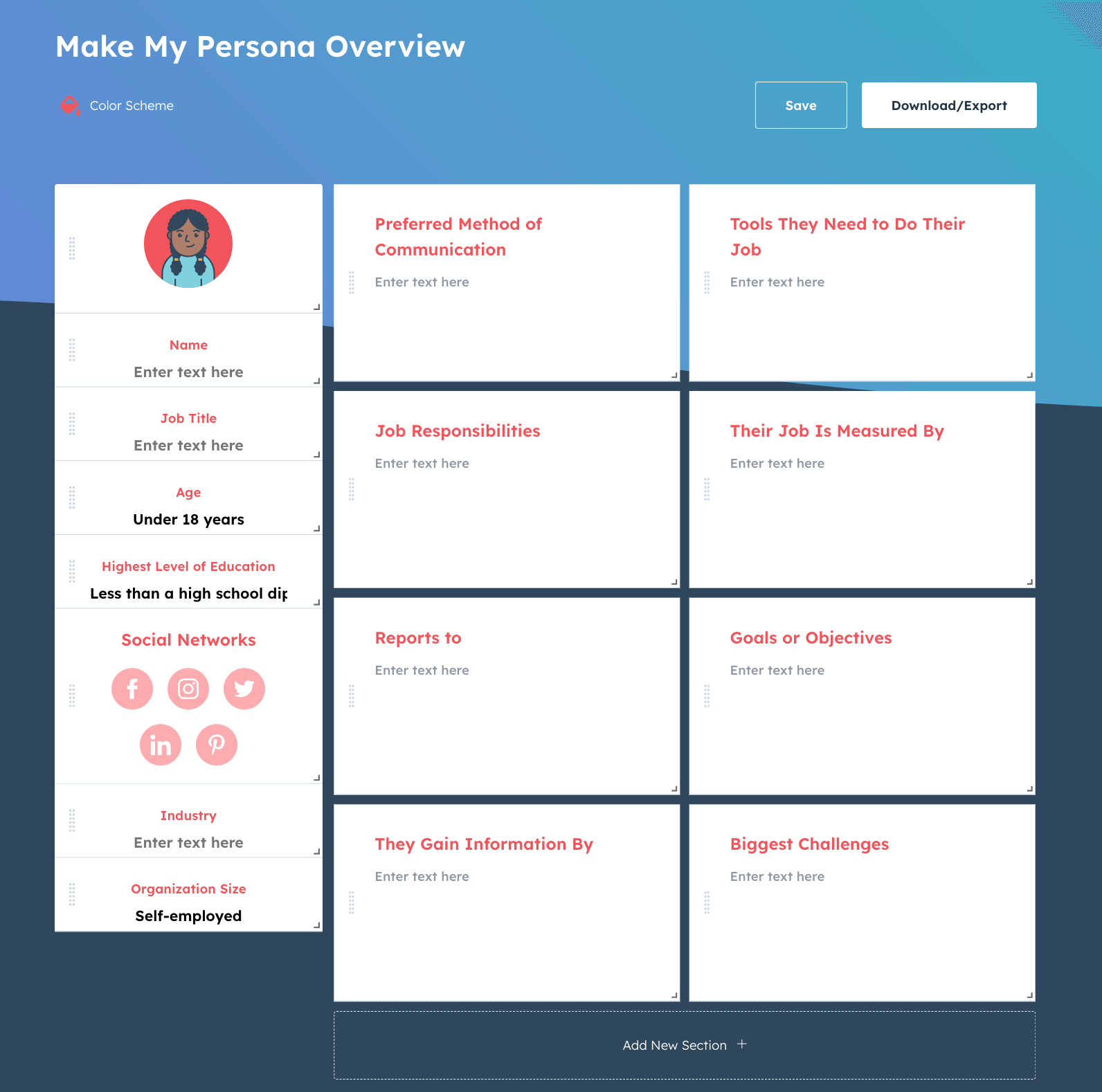
MakeMyPersona is a buyer persona generator by HubSpot. All you have to do is click on the “Start Making My Persona” button, and it will ask you a series of questions about your ideal customer. Once you’re done, they’ll send you a PDF with a headshot for your customer avatar.
188 Buyer Persona Questions
While the above buyer persona templates are excellent starting points, sometimes you’ll want to go more in-depth than the questions covered by any generic template.
Depending on your industry and your products, certain “niche” buyer persona questions are important for your business to answer.
To help you discover these questions, we’ve compiled a comprehensive list of every possible question you want to ask about your target customer. The list is broken down into categories, so focus on your business’s relevant categories and questions.
Demographics
- What is your name?
- What is your age?
- What is your gender?
- Where do you live?
- What is your racial/ethnic heritage?
- What is your annual income?
- What is your highest level of education?
- What is your occupation?
Back Story
- What is your birthplace?
- Where did you grow up?
- Was it a rural, suburban, or urban area?
- What kind of house did you grow up in?
- Who raised you?
- What did your parents (or primary caregivers) do for a living?
- Are your parents still married?
- Did your parents have a permissive or authoritarian parenting style?
- Do you have any siblings?
- What is your birth order?
- What are your favorite childhood memories?
- What were your favorite childhood activities?
- What was your favorite subject in school?
- What was your least favorite subject?
- What grades did you get in school?
- Do you enjoy learning new things?
- Did you have a lot of friends, a few close friends, or no friends?
- Did you get in trouble at school?
- Did you attend college?
- If so, what did you major in?
- What college did you attend?
- Did you enjoy your college experience?
- What did you do after high school if you didn’t attend college?
- What stopped you from going to college?
- What was your first job?
Personal Life
- What is your marital status?
- Are you happy about your current marital status?
- Do you have any children?
- If so, how many and how old are they?
- Are they boys or girls?
- Do your children live with you?
- If you don’t have children, do you want to have children in the future?
- Are you likely to have children in the future?
- Do you have any pets?
- If yes, how many and what are they?
- What type of housing do you currently live in?
- Who lives in the house with you?
- Are you happy with your current situation or wish it was different?
- How close are you to your extended family?
- Do you currently have many friends, a few friends, or no friends at all?
- Do you see your friends often?
- Who are the most important people in your life?
- Are you religious?
- What is your political orientation?
- Are you actively involved in politics?
- Do you make an effort to stay fit and healthy?
- What type of exercise do you do?
- If you don’t exercise, why not?
- Do you play any sports?
- Do you care about your appearance?
- What hobbies do you currently pursue?
- What do you like to do in your free time?
- What social groups/activities do you participate in?
- Are you environmentally conscious?
- What is your favorite TV show?
- What is your favorite movie?
- What type of music do you listen to?
- Do you enjoy reading?
- Are you a morning person or a night owl?
- What do you do first thing in the morning?
- Do you cook at home or eat out?
- Are you a neat freak, or are you OK with messes?
- How much time do you spend at work and at home?
- How do you spend your weekends?
- Where do you shop?
- What do you read for fun?
- Do you drink?
- Do you smoke?
- Do you experiment with recreational substances?
- What do you wish was different about your weekly routine?
- Are you tech-savvy?
- What news sources do you read?
- Do you enjoy traveling?
- Do you regularly go on vacation?
- If so, where do you go?
- Have you ever been backpacking?
- What is your current literacy level?
- Do you prefer baths or showers?
Career
- What is your industry?
- What is your job title?
- What are your responsibilities?
- Who do you report to?
- What is the size of your company?
- What skills are required for your job?
- What metrics are you responsible for/how is your job measured?
- What does a typical workday look like?
- What knowledge and tools do you use in your job?
- What are your challenges at work?
- How do you learn new information about your job?
- How do you prefer to interact with vendors?
- How did you arrive at your current position?
- What is your salary?
- Do you feel like you’re compensated fairly?
- Do you like your boss?
- Do you like your coworkers?
- Do you like the work you’re assigned to?
- What would you change about your job, if you could?
- What does your career path look like?
- Are you considering a career change?
- What is your dream job?
- Do you have plans to pursue your dream job?
- What work-related associations do you participate in?
- When do you plan to retire?
Personality
- How would you describe your personality?
- Are you an introvert or an extrovert?
- Are you optimistic or pessimistic?
- Are you more right-brained or left-brained?
- Are you quiet or boisterous?
- Are you practical or prone to flights of fancy?
- Do you prefer to follow the rules or challenge boundaries?
- Do you like to take risks or play it safe?
- Are you an innovator or someone who tends to go with the flow?
- Are you flexible or rigid in your thought patterns?
- Are you spontaneous, or do you prefer pre-determined plans?
- Are you motivated by your achievements or by what others think of your efforts?
- How affected are you emotionally by other people’s judgments?
- What would it take for you to deem your life a success?
- What would make you think your life was a failure?
Web/Purchase Behavior
- What social media sites do you use?
- How do you use the internet to search for products or vendors?
- Could you describe a recent purchase?
- How do you prefer to make online payments?
- Are you concerned about online privacy?
- How adept are you at using technology?
- Do you tend to embrace new technologies or prefer to stick with systems you know?
- Are you a fluent internet user?
- What operating system do you use?
- What internet browser do you use?
- What mobile devices do you use?
- What is your preferred search engine?
- What is your preferred method of communication?
- What sites do you usually shop on?
- Do you use your cell phone to make purchases?
- Where do you go to learn about a product or service?
- How important is it for you to get a good deal?
- What indulgent or luxurious purchases do you make?
Finances
- What is your net worth?
- Do you have debt?
- If so, what type?
- Do you make purchase decisions carefully, or are you loose with your money?
- How do you feel about your current spending habits?
- What factors drive you to make a purchase?
- Are you the main breadwinner in your household?
- Are you the financial/purchase decision-maker?
Goals, Challenges and Pain Points
- What are your goals in life?
- What are your career goals?
- What do you hope to gain from using our product?
- What accomplishments are you proudest of?
- What are the top three things on your bucket list?
- What is the most frustrating part of your day?
- What regular activities do you find stressful?
- What makes you nervous?
- What do you worry about?
- What makes you feel scared?
- What is the fastest way for someone to make you angry?
- What is the least favorite part of your job?
- What is the worst job you can imagine?
- What is the worst customer service experience you’ve ever had?
- What purchase did you most regret?
Product Insight/Objections to the Sale
- What objections do you have for our product?
- What factors might make you choose a competitor’s product over ours?
- How can we help you to solve your unique challenges?
- How does our product help you become your ideal self?
- How do you prefer to communicate?
- How can we meet your needs through onboarding?
- What questions would you ask yourself before buying a product?
- What is your number one concern when deciding whether or not to make a purchase?
- How do you prefer to make a purchase (online, over the phone, or in person)?
- When making a purchase online, what is your preferred payment method?
Questions To Ask Your Sales and Marketing Teams
- What technical and demographic information do you have about our website, and visitors?
- How are you currently marketing to our target customers?
- What marketing campaigns have been the most successful?
- What marketing campaigns have been the least successful?
- Which blog posts have received the most traffic/social shares/comments/etc.?
- What are the most frequently asked questions on the blog or from customers?
- Which pages on our website receive the most impressions?
- What types of customers do you typically meet?
- Why do different types of customers typically make a purchase?
- What reasons do customers cite for selecting us over our competitors?
- What are the most common objections you hear?
Buyer Persona Examples
Now, let’s take a look at some concrete buyer persona examples.
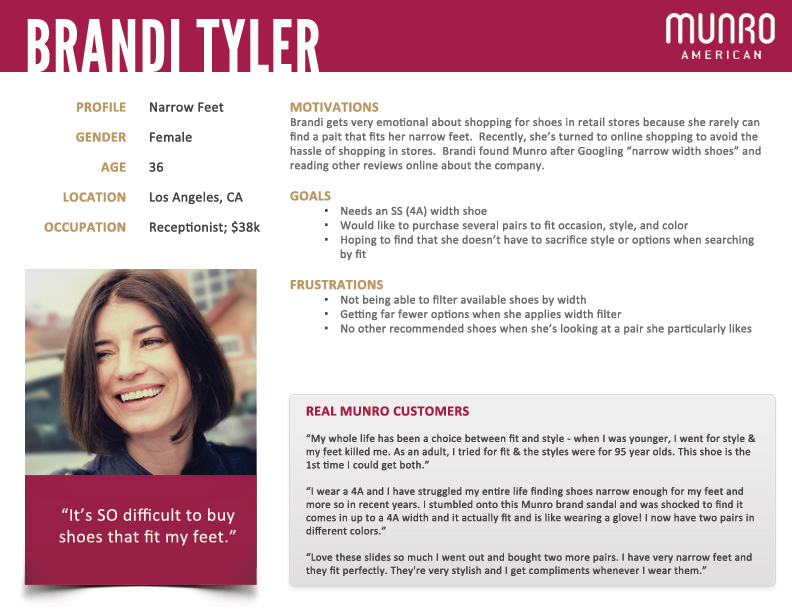
Shared by Indie Game Girl

Shared by Mallory Haack
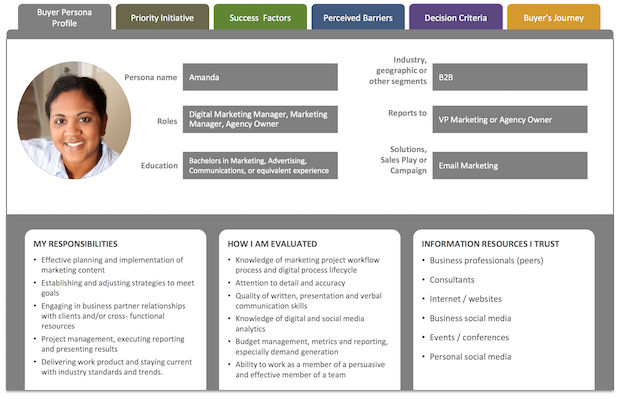
Shared by Buyer Persona Institute
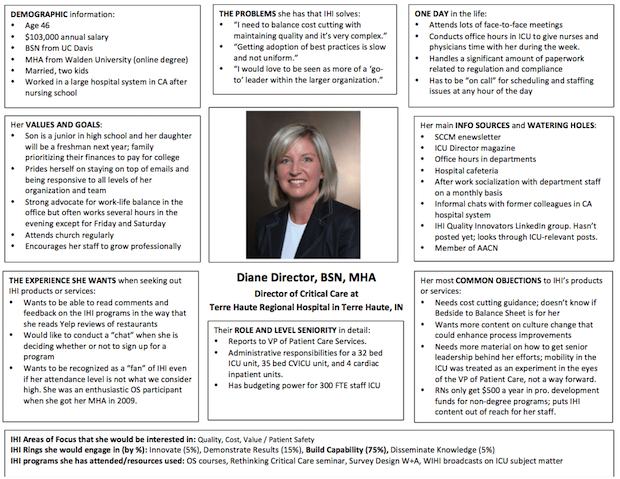
Shared by Buffer
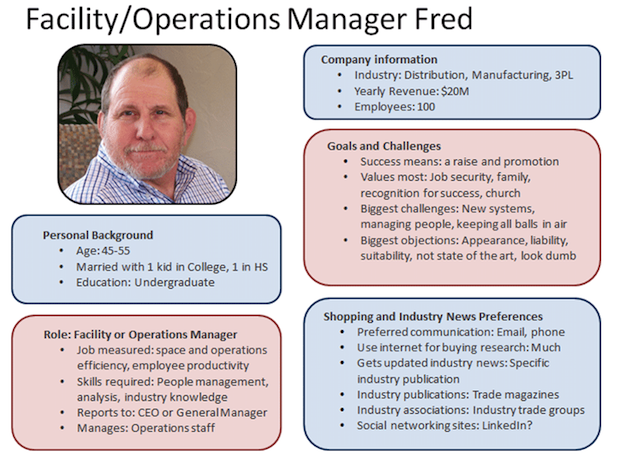
Shared by Buffer

Shared by Single Grain
That’s it! In this detailed guide, we have walked you through the meaning of buyer persona, its importance, and how to create a buyer persona for your business.
We also shared some buyer persona templates, a comprehensive list of questions to ask about your target customer, and some examples of buyer personas.
Now it’s your turn. Follow the steps above to create your buyer persona and clearly understand the individuals you serve.
Buyer Persona FAQ
1. What are the 4 types of buyer personas?
The 4 types of buyer personas are:
- The Economic Buyer: Focuses on cost-effectiveness and ROI.
- The Technical Buyer: Seeks detailed, technical information about products or services.
- The User Buyer: Emphasizes usability and how the product or service fits into their daily routine.
- The Coach (Influencer): Not a direct buyer but influences others in decision-making.
2. What best describes a buyer persona?
A buyer persona is a semi-fictional representation of an ideal customer based on market research and real data about existing customers.
3. What do you write in a buyer persona?
Content in a buyer persona is:
- Demographic information (age, occupation, location)
- Behavior patterns and lifestyle choices
- Pain points and challenges
- Goals and aspirations
- Preferred channels of communication
4. What are the key components of a buyer persona?
Key components of a buyer persona are:
- Background: Job, career path, family
- Demographics: Age, gender, income level
- Identifiers: Communication preferences, demeanor
- Goals: Primary and secondary goals
- Challenges: Main obstacles they face
- How We Help: How your product/service solves their challenges
- Real Quotes: From interviews or surveys
- Common Objections: Reasons they might not buy
- Marketing Message: How to describe your solution to them.
5. What is negative persona?
Negative personas or negative buyer personas represent those who you dont want to target as a customer
Also check out:

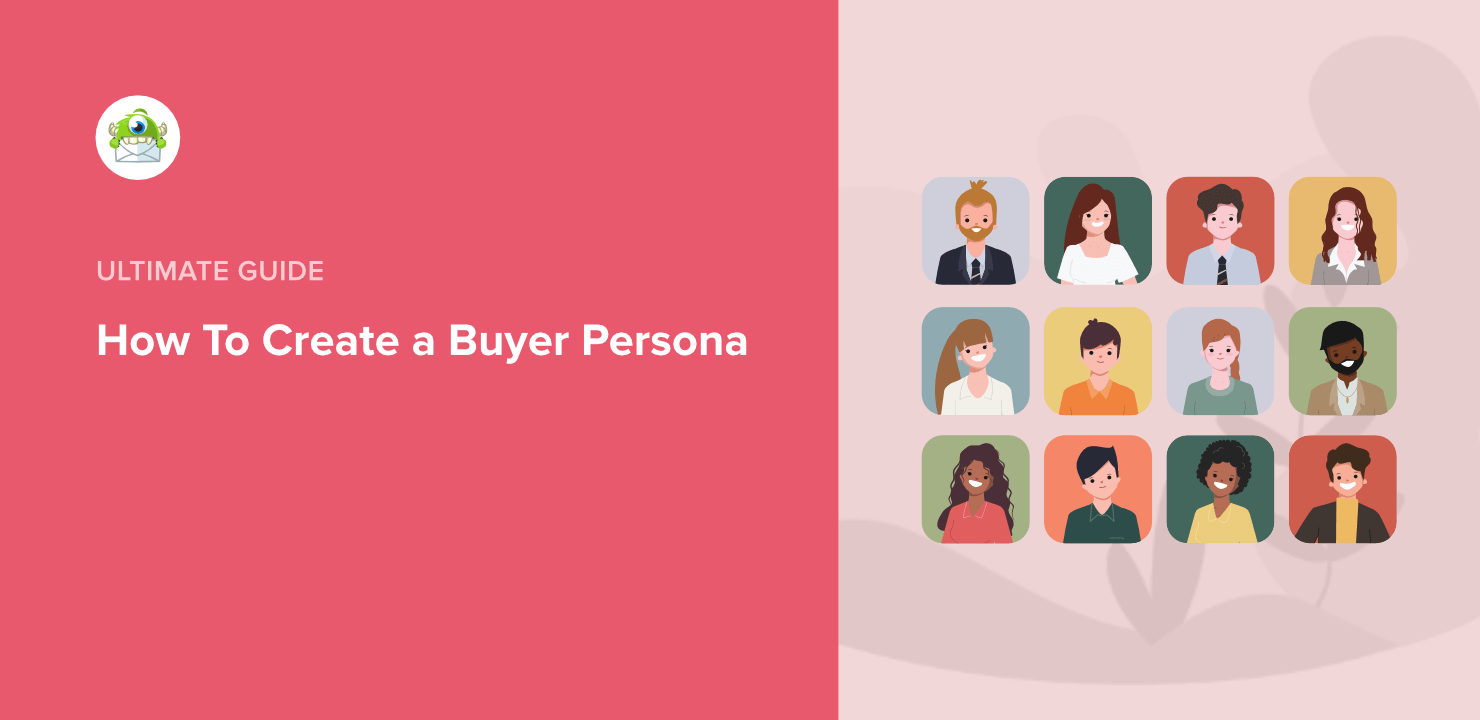
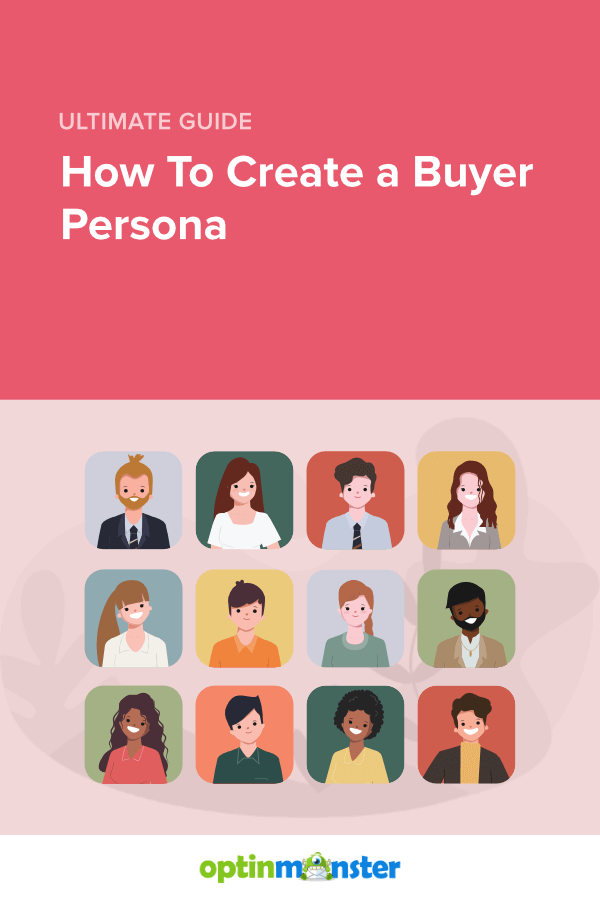









Add a Comment